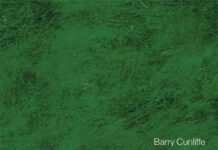
Ebook Info
- Published: 2015
- Number of pages: 530 pages
- Format: PDF
- File Size: 23.33 MB
- Authors: Barry Cunliffe
Description
By Steppe, Desert, and Ocean is nothing less than the story of how humans first started building the globalized world we know today. Set on a huge continental stage, from Europe to China, it is a tale covering over 10,000 years, from the origins of farming around 9000 BC to the expansion ofthe Mongols in the thirteenth century AD. An unashamedly “big history”, it charts the development of European, Near Eastern, and Chinese civilizations and the growing links between them by way of the Indian Ocean, the silk Roads, and the great steppe corridor (which crucially allowed horse riders to travel from Mongolia to the GreatHungarian Plain within a year). Along the way, it is also the story of the rise and fall of empires, the development of maritime trade, and the shattering impact of predatory nomads on their urban neighbours. Above all, as this immense historical panorama unfolds, we begin to see in clearer focus those basic underlying factors–the acquisitive nature of humanity, the differing environments in which people live, and the dislocating effect of even slight climatic variation–which have driven changethroughout the ages, and which help us better understand our world today.
User’s Reviews
Editorial Reviews: Review “Cunliffe is a master storyteller, explaining his carefully researched conclusions through polished language and apropos turns of phrase that make his book a breeze despite its depth and breadth.” –Publishers Weekly”In tracing the rise of Eurasian civilization, Cunliffe makes clear that history is much more than just one thing after another. As migrations and conquests pile up in the book, it becomes apparent that a dizzying array of forces interacted to produce the modern world.” –Science News”By Steppe, Desert, and Ocean: The Birth of Eurasia by Barry Cunliffe is a pathbreaking attempt to enhance understanding of Eurasia by means of a reconsideration of focus, scale, time frame, and sources.”-Stewart Gordon, H-Net”Cunliffe is a master storyteller, explaining his carefully researched conclusions through polished language and apropos turns of phrase that make his book a breeze despite its depth and breadth.” –Publishers Weekly”In tracing the rise of Eurasian civilization, Cunliffe makes clear that history is much more than just one thing after another. As migrations and conquests pile up in the book, it becomes apparent that a dizzying array of forces interacted to produce the modern world.” –Science News”By Steppe, Desert, and Ocean: The Birth of Eurasia by Barry Cunliffe is a pathbreaking attempt to enhance understanding of Eurasia by means of a reconsideration of focus, scale, time frame, and sources.”-Stewart Gordon, H-Net About the Author Barry Cunliffe taught archaeology in the Universities of Bristol and Southampton and was Professor of European Archaeology at the University of Oxford from 1972 to 2008, thereafter becoming Emeritus Professor. He has excavated widely in Britain (Fishbourne, Bath, Danebury, Hengistbury Head, Brading)and in the Channel Islands, Brittany, and Spain, and has been President of the Council for British Archaeology and of the Society of Antiquaries, Governor of the Museum of London, and a Trustee of the British Museum. He is currently a Commissioner of English Heritage. His many publications includeThe Ancient Celts (1997), Facing the Ocean (2001), The Druids: A Very Short Introduction (2010), and Britain Begins (2012), all also published by Oxford University Press. He received a knighthood in 2006.
Reviews from Amazon users which were colected at the time this book was published on the website:
⭐If Amazon had a ten star rating I would have given this a five. Also I was looking for something more focused on Central Asia than all of Eurasia but this book is definitely, as it clearly says, about Eurasia, so I am absolutely not rating this based on what I hoped for versus what I got. This is not my first research rodeo. Let’s break it down:Pros:1. Lots of extremely useful (to me) geographical information.2. Lots of extremely useful (again, to me) information on the broad movement of groups of people.3. Lots of good synthesis of the above information with timeframes, something many books fail to deliver.4. The writing style was readable, pleasent even, and mostly clear.5. The early emphasis on climate change and disruption was very interesting. If he seems to lose that thread later it’s because the climate stabilized, which is fair.Cons:1: Not to put too fine a point on it, the first five chapters were an absolute DRAG. And there was no reason for this except the author didn’t warm to his subject until he could find a toehold for his own biases. And while it won’t read like a biased book, it absolutely is. To wit:2. How, in 2014 (when this was published), do people still get away with writing as if half the human population doesn’t functionally exist? How? I’ve been researching historical subjects for thirty years, and in source material from, let’s say, 1950, sure, okay, but how is this still going on? You can’t excuse yourself when you take the time to repeat “population growth”, “population uptick”, “population explosion”, etc. and act as though this randomly happened, while also insinuating only men farmed, only men herded livestock, only men fought, only men ruled, only men everything. Oh, sure, he uses the accurate term “humankind” instead of “mankind”, but then only pays attention to men. The great steppe warriors charging around doing warriory things is cute and all, but does not a culture or history make and, not to belabor the point, but archaelogy has repeatedly shown there were a lot of female warriors too in that region, if that’s the only thing about the “Central Asian hoardes” that fascinates you so much.Okay, I’m going to belabor this point. It’s obnoxious is what, when you go out of your way to quote extensively from Herodotus and yet somehow manange to never mention the Amazons. You choose to think Herodotus is accurate for some things but not for others. In fact if you go out of your way to mention, begrudgingly, as if they were singular, the cultures of the Massagetae and the Sauromatae and then you choose specifically NOT to tie this in to Herodotus who you were just extensively citing for far less interesting reasons? Imma sideeye you, hard. Your bias is showing. That was one of the more obvious examples. The second to last chapter on the Mongols was another glaring example. And I can hear the excuses now: “Oh, he didn’t get into the lives of men either!” I’ll stop you right there, when you compose an entire book with a male default and the vast majority of names you mention are male, yes, you have gotten into the lives of men. And then you choose to never explain how cultures sustained themselves while these mystical male steppe warriors you’re fangirling over were running around warrioring. “Oh, you’re just trying to be politically correct!” No, I’m trying to be factually correct. Historically correct. Accurate. Whether you purposely or unwittingly ignore half the human race, you are the problem, not me.Ahem.3. He has a neoliberal globalization bias that is really obnoxious given this is a clearcut case of taking a current mode of viewing things and trying to apply it earlier times.4. Same goes for his obsession with capitalism and trade. There was so much room for so many interesting things, and he didn’t access any of it.5. He overuses the word “elite”. That should tell you something. He also uses the word “sedentary” to stand-in for too many things. He has a fixation on the old fantasy/historical novel trope of the “decadent empire” vs the “tough resilient warriors”, which is a trope because oh my lord yeah we get it, eating well and not murdering everyone all the time is totally awful, whatever dude.6. In a really big oversight, in my opinion, the slave trade gets no analysis whatsoever. It hardly gets mentioned. And given how slavery operates in shaping cultures and landscapes and his more preferred subject, economies, that’s kinda a big deal.7. And last, religion. He takes the time to mention Buddhism and Islam specifically, and Christianity of course. This leaves one with a lot more questions than answers, given the thousands of years of other religions all across a huge region– some of which remain intact to this day. And it’s a little weird, for example, that he spends so much time on Islam, even going into a dumbed-down version of the Sunni/Shia divide, and almost none on the main religion of Persia that predated it, Zorastrianism, which had such a huge influence regionally. If he didn’t bother to delve into the modern Abrahamic religions so thoroughly (relative to the other subjects in this book) I wouldn’t take issue with this, but he did, and that’s a pretty big fail in my estimation. Religion drives all kinds of things, and modern patriarchal religions are not exceptional in that regard.Look, if you don’t care about people and culture and even a broad overview of how societies operate, this is totally the book for you. He just doesn’t seem to have it in him to look at these things in any meaningful way. I learned nothing about the culture of any region. Now, to be fair, this book is an overview. But if you can repeat yourself about numerous subjects and theories, you can certainly fill in some blanks. And honestly, overviews are only as good as what they reveal. This book revealed geographical movement in a really useful (to me) way. I’m not sorry I ordered this and read it and now have it to reference for that reason. But the missed opportunities to answer really basic questions just kills it for me.Maybe I’m in denial. Maybe I’m not as agnostic on this book as I think I am. Maybe I’m trying way too hard to give him the benefit of the doubt. Anyway, there’s my review.
⭐Cunliffe’s earlier “Between Two Oceans” was a totally mind-blowing experience, elegantly written, fluent, a true reading adventure. Thanks to it, I’ve incorporated much more pre-history and archaeology into my reading agenda. His “Scythians,” by contrast, was a rather academic exercise, and I read it with more than an occasional yawn. “By Steppe…” combines overarching historical exploration with an occasional dead slow pace and TMI, and is a useful but not always gripping read. Its major shortcomings, in my view, are two. The first is one Cunliffe explicitly cops to, an unwillingness to address linguistic questions, such as, for example, the spread of Indo-European languages. A second, related, flaw is the vagueness with which he addresses the period of IE arrival in Europe, which I understand to have been about 4,500 years ago. How did IEs spread throughout Europe, by what means (invasion or cultural dominance); how did the various IE linguistic groups consolidate or separate, and to what extent did they absorb or adapt to existing populations. Perhaps answers to these questions may exist in other works, but for an amateur historian myself new to the reading of pre-history, it seems that a work apparently intending to be exhaustive should include at least suggestions of answers to these questions. Still, well worth a read though it requires some time and work.
⭐A real disappointment; it doesn’t contain much information!A real disappointment. Mind, I was hardly expecting everything from Barry Cunliffe, but details included and he doesn’t WORK at disgusting the reader would be good, not that Barry Cunliffe cares what peasants like me think, who aren’t educated to the fact that telling the truth isn’t high priority.At the outset of the book, Barry Cunliffe informs us that he won’t be considering genetics or etymology. Those two subject areas contain most of the definitive proof that Indo-Europeans swept across Europe from the Eurasian steppes around 2700 BC. So for example we’re ignoring everying from the fact that honey bees only lived on the western steppes, and Indo-European had words for bees and honey, to the fact that Indo-European had words for horse and horse accoutrement and horses weren’t found somewhere else, to the fact horses were domesticated in 4000 BCE where horses existed, and not 6000 BC in Anatolia where the first farmers lived. And we’re above all ignoring the fact that analysis of ancient skeletons proves that haplogroup R1b was not found in Europe before 2700 BCE but lived on the Eurasian steppes, and further it developed on the Eurasian steppes. By 2200 BCE haplogroup R1b had swept across Europe and taken over. Barry Cunliffe explains we don’t know about genetics to use it. The single biggest piece of news in this book is that Barry Cunliffe is not only not as bright as he comes across, it’s hard to see how he got through even England’s elite school system. But he is actually bright; this is absolute willful complete idiocy.This is what we’re dealing with with British academia. The Church of England told its gay clergy that if they are married to a gay spouse, then if asked they must say they’re not sleeping together, and in a formal position statement told people on both sides of that issue to stop “randomely substituting ideas into sentences”, and leave thinking to their elders and betters. The document was full of statements like sexuality is a gift from God , but it’s a gift we have to be very suspicious of. These people couldn’t ever care about truth to save their lives. British academia and British news media both, are full of people saying shocking things with no regard for the truth, but just for verbal sport.So Cunliffe informs us that he prefers to let the RELEVANT information speak for itself without any garbarge about the facts.Next he spends 20 pages on an extended off topic diatribe about plate tectonics. I am now in the middle of 30 pages of a travelogue about the Eurasian steppes, focusing on what the flowers look like there in the spring.Eventually the book seems to promise to examine networks of exchange of goods and ideas between the steppe nomads and the people of Europe, on the completely untrue premise that there was no mass migration into Europe. I did buy this book for the factual information it exists. Of course the steppe people traded goods and ideas with the people around them; this was essential to their development. The wheel, bronze working technology, and cattle all came from other peoples who lived on the periphery of the steppes. The actual Indo-European takeover of Europe was, again from analysis of those ancient skeletons Cunliffe dismisses, facilitated by the fact that plague swept across eastern and central Europe, clearing it of people ahead of the advance of the steppe people. Plague would have been spread by trade. If the steppe people had been in Europe when the plague swept through it should have killed them as well, as much as their lifestyle was different and more isolated, and steppe people recognized and knew how to handle the plague.I just expected Cunliffe not to try this hard to completely disgust me. And I was expecting some sort of factual information to be far more thickly distributed in the book than it is.Cunliffe is actually capable of excellent academic work when he chooses on occasion, though he always ignores something important, and tends to follow excellent academic work with flaky conclusions. For example he and a colleague did excellent work revealing that when they had been in existence for hundreds of years the Celts, who were primarily merchants, had trading colonies in Phoenician territory in Spain and could write, and that they adapted their military swords from bronze age English swords. One can learn much about trade and spread of Celtic culture by reading some of those articles. But he concludes that the Celts originated in Spain or Britain. That is so flaky it is not reasonable to think Cunliffe believes it; he is claiming it for its shock value, loudly, at the rate of dozens of publications a year.
⭐Dry enough listing of geographic locations and brief description of events, and no writer’s magic to keep it all together. What could have become a page turner ended up being a set of boring statements.
⭐So far so good, and the journey this book takes is indeed far flung in time and space. It will take me a while to read fully (probably twice)
⭐Fascinating reading, it brought together in one clear explanation many of the books I’d read earlier. His development of the ‘connectivity’ thème was particularly interesting showing the ‘globalisation’ of Eurasia over many millenia. The maps and illustrations are clear and very useful. Highly recommended for a non specialised reader such as myself.
⭐Stunning book with gorgeous photos and lots of maps. Covers the history of Eurasia and is absolutely fascinating, if not always an easy read.I didn’t know how little history I knew until I read this book.
⭐I gave my soft-back version to my son and bought this in hard-back, in tribute to the author
Keywords
Free Download By Steppe, Desert, and Ocean: The Birth of Eurasia 1st Edition in PDF format
By Steppe, Desert, and Ocean: The Birth of Eurasia 1st Edition PDF Free Download
Download By Steppe, Desert, and Ocean: The Birth of Eurasia 1st Edition 2015 PDF Free
By Steppe, Desert, and Ocean: The Birth of Eurasia 1st Edition 2015 PDF Free Download
Download By Steppe, Desert, and Ocean: The Birth of Eurasia 1st Edition PDF
Free Download Ebook By Steppe, Desert, and Ocean: The Birth of Eurasia 1st Edition




